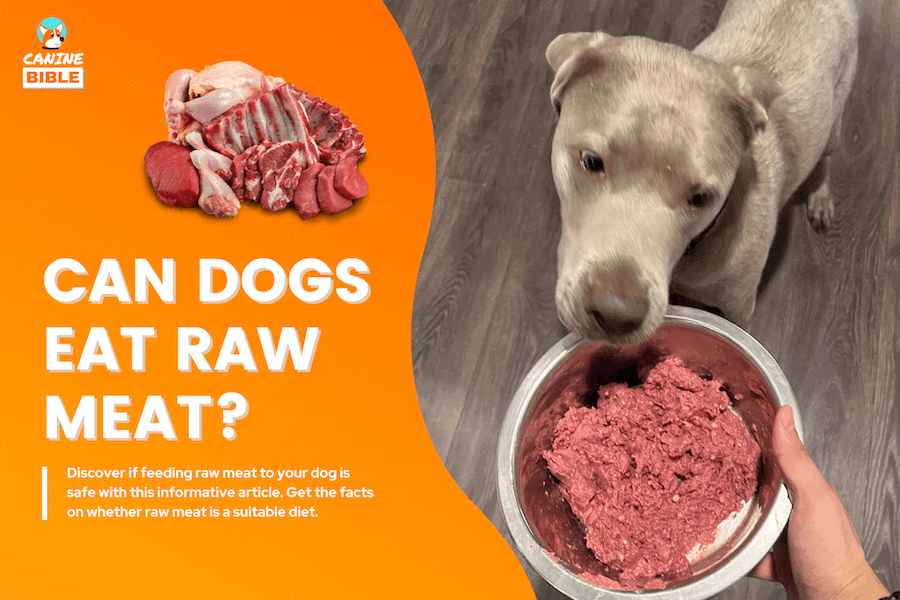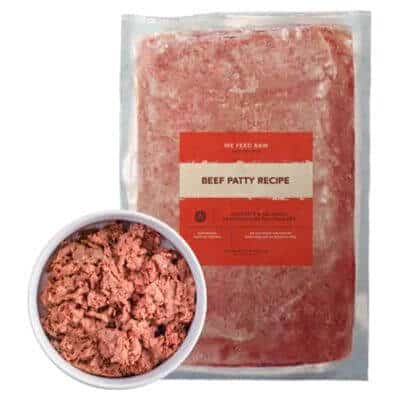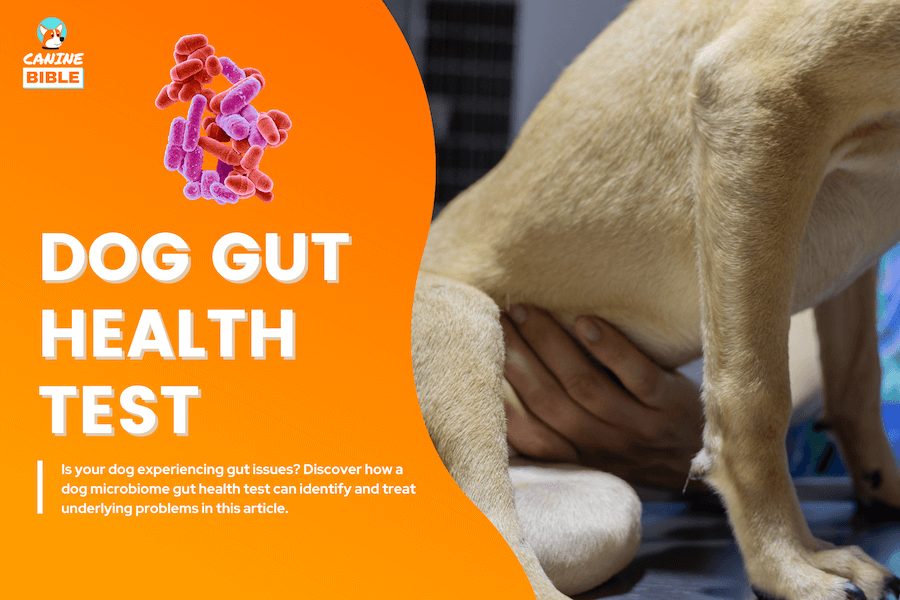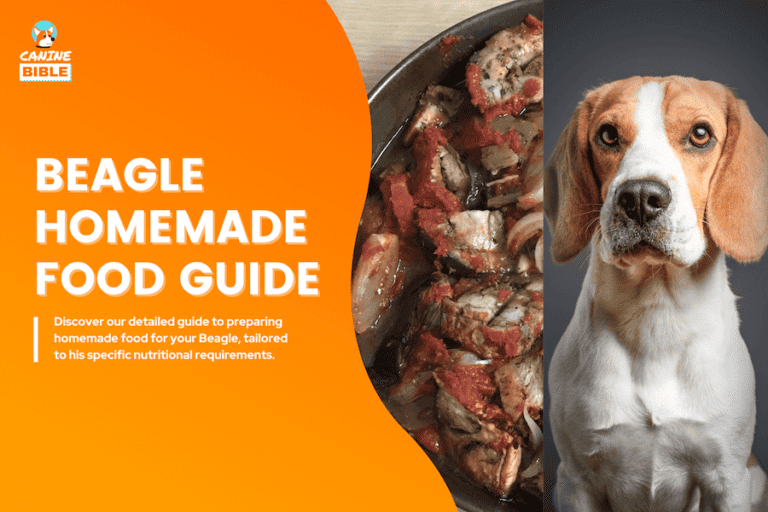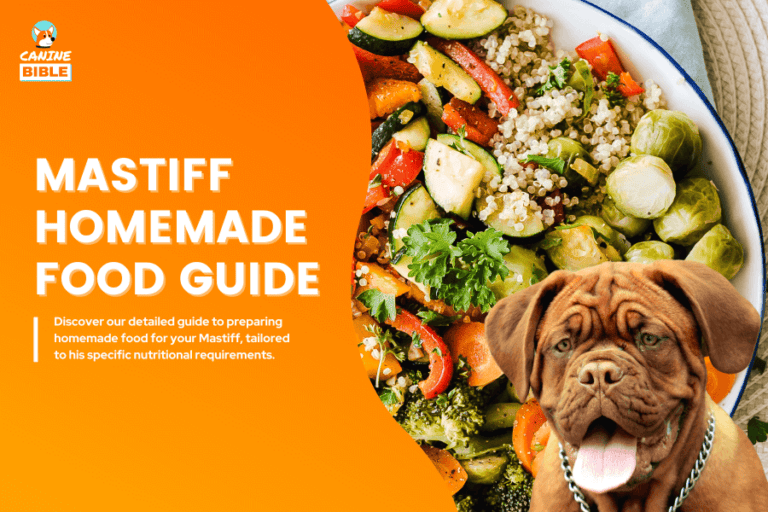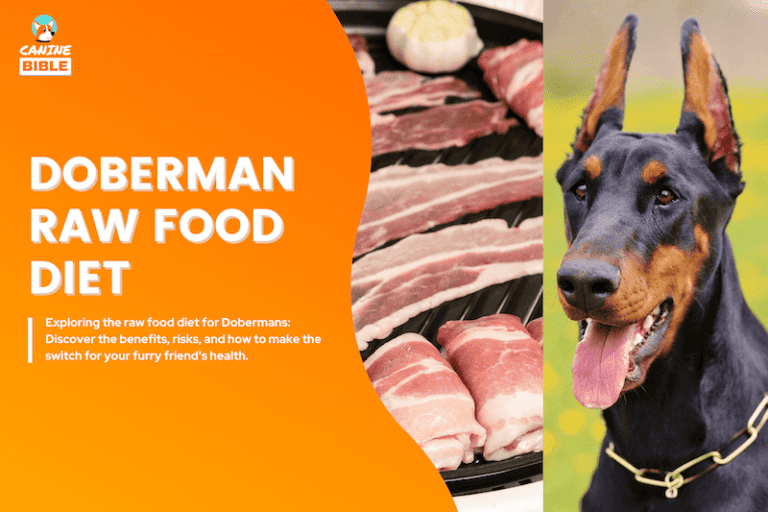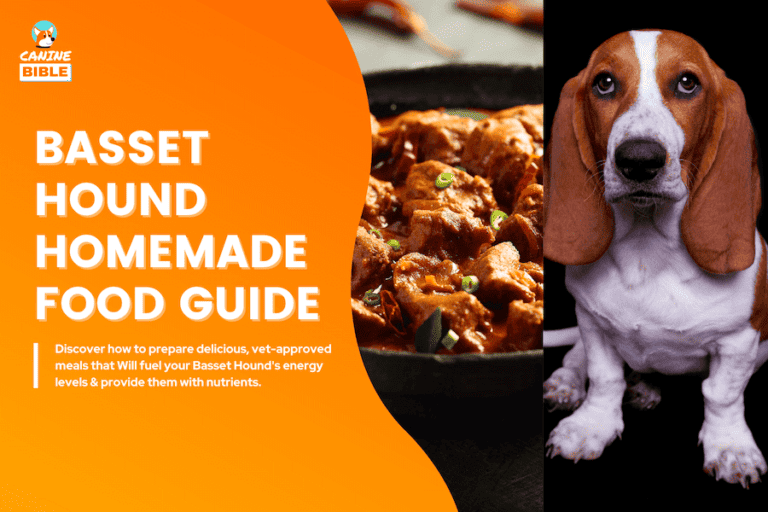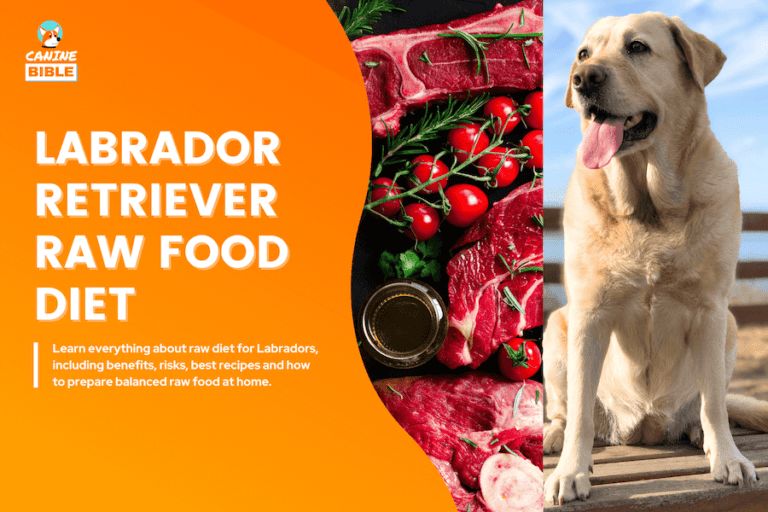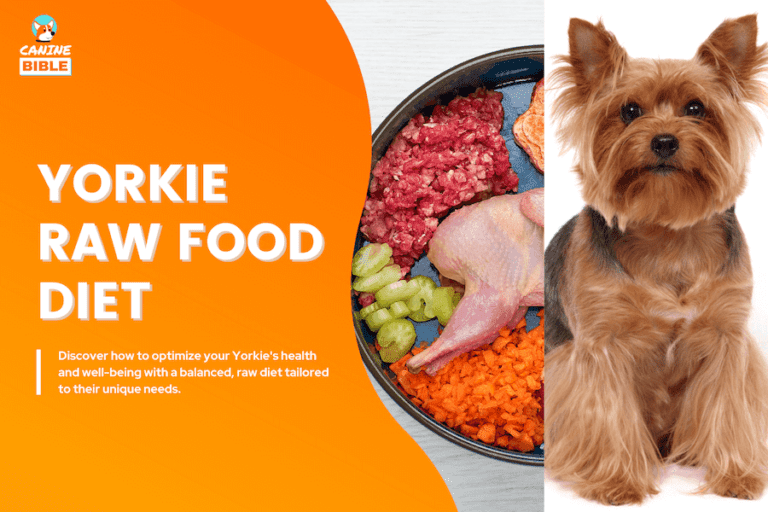Homemade Raw Dog Food: Easy BARF Diet Recipes [Vet Approved]
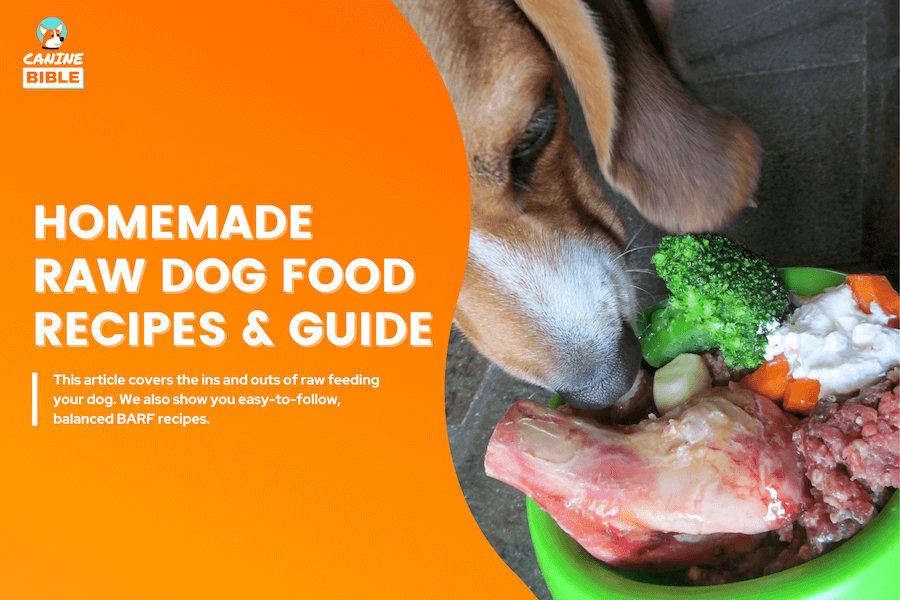
Canine Bible is reader-supported. We receive affiliate commissions via some of our links. This doesn’t affect rankings. Learn more.
This is the most comprehensive guide to the best BARF dog food recipes and learning how to cook them at home. Raw dog food can make our dogs happier and healthier, but you must understand all the components of preparing a complete and balanced raw dog diet at home before getting the apron. A poorly made BARF diet can negatively impact your pup. Today, we share vet-approved raw dog recipes and all the important information about the BARF diet for dogs, including benefits, risks, nutritional guidelines, cooking tips, and everything in between. Our DIY raw dog food guide gives step-by-step instructions for making BARF diet recipes. Let’s dive right in!
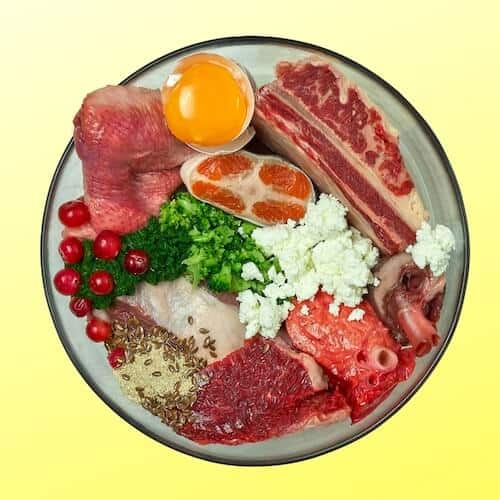
Nutrition, Benefits & Risks
Jump to: Recipes & Cooking
What Is A BARF Diet Recipe?
The raw dog diet, also known as BARF (Biologically Appropriate Raw Food), is designed to mimic a dog’s ancestral diet, drawing on the canine’s carnivorous and primal instincts. All ingredients in BARF diet recipes are uncooked to preserve enzyme content, minerals, vitamins, and other essential nutrients. There are three types of raw dog diets: frozen, freeze-dried, and homemade. The BARF diet reflects what dogs consumed in the wild millions of years ago and typically consists of the following ingredients:
Can Dogs Eat Raw Meat?
Dogs can thrive on a raw meat diet. Genetic and anatomical research shows dogs have noticeable carnivorous traits that allow them to digest raw meat protein more quickly while killing potential bacteria in decaying meat. Dogs also have a remarkable omnivorous capacity but are optimized for eating meat. Read our ‘Can dogs eat raw meat?‘ article to learn all the research that supports dog raw meat consumption.
BARF Dog Food Recipe Benefits
Dr. Ian Billinghurst, a veterinarian, pioneer, and top advocate of raw feeding dogs, mentions raw food has several positive effects on canine health, including:
Why Feed BARF Homemade Raw Dog Recipes
Homemade Raw Dog Food Risks
Contamination
Raw ingredients pose a higher risk of contamination with harmful pathogens (i.e., Salmonella, E. coli) that can sicken you and your pet.
Choking
Feeding whole bones to dogs presents a risk of choking, broken teeth, intestinal obstruction, or internal punctures.
Unbalanced
Cooking nutritionally unbalanced raw food recipes can lead to malnutrition, obesity and other health issues.
Raw allergies
Dogs might be allergic to raw ingredients. An at-home dog allergy test can help you pick ingredients that won’t trigger allergies.
How to Reduce Raw Dog Food Risks
You can get personalized nutritional advice from a registered vet nutritionist through Vetster anytime, anywhere. You can also chat with an online vet and ask them questions about your dog’s nutritional needs.
How to Make Raw Dog Food Recipes
A BARF diet should consist of 70% uncooked muscle meat, 10% raw edible bone, 10% vegetables and fruit, 5% liver, and 5% other organs. It must also include the six essential nutrients for a dog’s proper growth, body function, and health. These nutrients include proteins, carbohydrates, minerals, vitamins, fats, and water. It’s also important to consider your pup’s weight, health conditions, size, and activity level.
Below is a detailed breakdown of each nutrient and its importance.
BARF Raw Diet Nutritional Guidelines to Follow
Proteins
Protein plays a vital role in your dog’s diet, providing essential amino acids necessary for bodily processes, including the creation of blood glucose for energy. Protein also helps build and repair muscles and other body tissues. It’s needed to make new skin cells, grow hair, hormones and enzymes. The proteins in your dog’s diet must have a balanced amino acid profile and are provided in appropriate amounts.
Protein dietary recommendations for raw homemade dog food:
Raw protein sources for homemade raw dog food recipes include:
Carbohydrates
Dogs need energy for daily activities, growth, pregnancy, lactation, and exercise. This energy, measured in calories, comes from carbohydrates, proteins, and fats. Omnivorous animals, including dogs, derive some energy from carbohydrates. Carbohydrates supply glucose needed by the brain, nervous system, and other critical organs for normal function in dogs. You can use our dog calorie calculator to find the exact caloric needs of your dog based on his weight. Ensure you follow the 10% rule if feeding treats to your dog. Food would equal 90% of the total calories and treats the remaining 10%.
Energy dietary recommendations for raw homemade food based on life stage, weight and activity level.
| Type of Dog | 10 lb | 30 lb | 50 lb | 70 lb | 90 lb |
|---|---|---|---|---|---|
| Puppies | 990 | — | — | — | — |
| Inactive Dog | — | 674 | 989 | 1,272 | 1,540 |
| Adult Active Dog | — | 922 | 1,353 | 1,740 | 2,100 |
| Pregnant Dog | — | 1,274 | 1,940 | 2,570 | 3,170 |
| Young Active Dog | — | 993 | 1,451 | 1,876 | 2,264 |
| Senior Active Dog | — | 745 | 1,093 | 1,407 | 1,700 |
Carbohydrate sources for raw dog food recipes include:
Fats
Fats play a multifaceted role in a dog’s diet. They are a dense energy source, provide essential fatty acids for skin and coat health, enable absorption of fat-soluble vitamins, improve food palatability, offer insulation and organ protection, support reproductive health, are critical for nervous system function, and serve as a reserve for energy storage.
Fat dietary recommendations for raw homemade dog food:
Fat sources for raw dog food recipes include:
Minerals
Minerals in a dog’s diet are indispensable for bone and dental health, nerve function, enzymatic reactions, fluid balance, oxygen transport, and maintaining the body’s pH level, making them essential for overall health and metabolic processes. Proper mineral balance is crucial and should be carefully managed to avoid deficiencies or excesses.
These 12 minerals are known to be essential nutrients for dogs:
Mineral sources for homemade raw dog food include:
Vitamins
Vitamins in a dog’s diet are integral for maintaining overall health and bodily functions. They support vision, immune health, aid in energy metabolism and nervous system function, provide antioxidant benefits, reduce inflammation, prevent diseases and ailments and more. Dogs require vitamins, but only in small amounts, and excessive doses of certain vitamins, like vitamin D, can harm them.
These 12 vitamins are known to be essential nutrients for dogs:
Vitamin sources for raw dog recipes include:
Water
Water is vital in a dog’s diet to maintain hydration, support body functions such as digestion, nutrient absorption, and waste excretion, lubricate joints, regulate body temperature, ensure proper organ function, and facilitate metabolic processes. Continuous access to clean water is as crucial as providing nutritious food for overall health and well-being. Generally, dogs should drink 2 to 3 times the amount of their dry food intake daily. However, dogs can naturally regulate their daily water consumption if water is readily available from various sources.
*If feeding the “Prey” model, this method typically consists of 80% muscle meat, 10% bone, and 10% organs (half of which is liver.). No fruits or veggies.
Source: We compiled the data for the table above by referencing the Association of American Feed Control Officials (AAFCO) guidelines and the Nutrient Requirements of Dogs Report by the National Research Council (NRC). The Food and Drug Administration (FDA) utilizes the information from these reports to regulate and ensure the safety of pet foods.
Homemade BARF Recipe Dog Food Delivery Service
Are you confused about preparing a balanced dog raw meat diet? Do you have a busy lifestyle with little cooking time for your pup? Don’t know where to start? If you answer ‘yes’ to one or more of these questions, a raw dog food delivery service is the best way to let your dog reap the benefits of eating raw.
We Feed Raw is one of our favorite choices and offers the best BARF diet recipes for dogs available on the market. This company is the pioneer of raw dog food. They deliver Biologically Appropriate Raw Food straight to your door. Their formula is a balanced blend of raw meat, fruits, vegetables, organs, and bones. Plus, it’s supplemented with four other key ingredients. All of their ingredients are USDA-sourced. Their formulas are developed with the input of a veterinary nutritionist to meet the nutritional guidelines AAFCO sets.
Recipes, Cooking Tips & More
Jump to: Benefits & Nutrition
Homemade Raw Dog Food Recipes Vet Approved
Here are our favorite balanced, vet-approved, and complete homemade raw dog food recipes. We’ve also included a special treat recipe for your dog, enriched with the health benefits of our favorite ingredient: dog CBD oil. CBD oil might help with issues like seizures, anxiety, arthritis, inflammation, pain, and overall wellness.
Note: Consult your vet before adjusting your dog’s diet. The recipes below don’t specify serving sizes since they depend on your dog’s breed, weight, age, activity, and health. As a guideline, consider feeding the equivalent amount you’d give in kibble, but always consult your veterinarian for proper portioning.
- Fido Raw Feast
- CBD Infused Treat
- Beefy Raw Patties
- Raw Boneless Turkey
- Organ Patties
- Chicken & Greens
Forest Feast for Fido
Fido Raw Feast
Ingredients
- 2.5 lbs of lean chicken
- 1 lb turkey hearts
- 1/4 lb chicken liver
- 4 pasture-raised eggs without shells
- 8 oz of green beans
- 1/2 oz of finely chopped kale
- 6 oz of mixed berries (blueberries, raspberries and strawberries)
- 2 gr of krill oil powder
Instructions
- Prepare the chicken: Cut the chicken into small, bite-sized pieces appropriate for your dog's size. If you prefer, you can grind the chicken using a meat grinder.
- Prepare the organs: Finely chop the turkey hearts and chicken liver, or grind them together with the chicken if your dog prefers or requires a finer texture.
- Veggie and berry puree: Puree the green beans, kale, and mixed berries in a food processor until smooth. This helps improve digestibility and nutrient absorption.
- Mix together: In a large bowl, combine the ground or chopped chicken, turkey hearts, chicken liver, and eggs. Add the veggie and berry puree along with the krill oil powder. Mix thoroughly to ensure even distribution of all ingredients.
- Portion and freeze: Divide the mixture into smaller containers based on your dog's daily food intake. Freeze the portions. You can thaw them in the refrigerator 24 hours before feeding.
Blueberry-Banana CBD-Infused Dog Treats
Treat your dog with these nutritious, therapeutic, and delicious homemade CBD treats. They are made with bananas, a great source of essential vitamins and minerals (like potassium, vitamin C, and vitamin B6). Banana also aids with digestion and energy. Coconut is added for skin and coat, digestion and helps reduce allergic reactions.
Remember to consult your vet to ensure CBD is safe for your dog and that you are giving the correct dosage. Alternatively, you can buy commercially available CBD dog treats so your pup can experience CBD’s benefits without the cooking.
Ingredients
Directions
- Oven preparation. Preheat oven to 350ºF and brush a dog biscuit baking tray with coconut oil.
- Banana preparation. Mash a ripe banana until smooth, ensuring no large chunks remain.
- Dry ingredients. Blend gluten-free flour and oats in a medium-sized bowl.
- Wet ingredients. In a separate bowl, whisk an egg until beaten. Add coconut oil, water, mashed banana, unsweetened applesauce, and fresh blueberries. Mix well.
- Combining ingredients. Combine the wet mixture with the dry ingredients, stirring until even. Drizzle in CBD oil, stirring again for even distribution.
- Mold filling. Scoop portions of the mixture with a tablespoon and press firmly into the dog-treat baking mold.
- Baking. Bake in the oven for 30 to 40 minutes until the treats are firm to the touch and slightly golden.
- Cooling and storage. Let the treats cool before transferring them to an airtight container for storage.
Beefy Bark Gourmet Patties
This raw meat food recipe for dogs is among our favorites. Easy to digest and packed with all the essential nutrients dogs need.
Ingredients
Directions
- Prepare the veggie and fruit mix: Place the carrot, apple, and spinach in a food processor. Process until the mixture is finely chopped.
- Create the liver blend: Add the chicken livers to the food processor with the veggie and fruit mix. Process until fully mixed.
- Combine with wet ingredients: Transfer the liver and veggie mixture to a large bowl. Add and combine the reaming ingredients, whole eggs (with shells), plain yogurt, ground flaxseed, and olive oil.
- Add the beef: Add the ground beef to the bowl. Use a large spoon to mix everything until the beef is evenly distributed.
- Form the patties: Scoop out portions of the mixture and form them into palm-sized patties. Place the patties on a parchment-lined baking sheet.
- Freeze for storage: Freeze patties and transfer them to a storage container to keep them frozen.
- Serving: The night before you wish to feed, remove the patties from the freezer and place them in the refrigerator to thaw.
Wholesome Turkey and Heart Harmony Blend
If you want to make a simple recipe that can last you well beyond a week, or perhaps you have more than one dog at home, this recipe will make 11 pounds of raw food, which is 6-7 days’ worth of food for a 50-pound dog, or two smaller dogs.
Ingredients
Directions
- Prepare the proteins: If you have a grinder, grind the chicken hearts and beef liver together until well combined. If you don’t have a grinder, chop the heart and liver into small, bite-sized cubes.
- Egg preparation: Crack 7 eggs, keeping only 3 yolks. You can either whisk them lightly in a bowl or keep them whole to be blended with the vegetables.
- Vegetable and berry puree: Chop the Swiss chard, broccoli, and dandelion greens and place them into the food processor along with the blueberries or mixed berries. Add the eggs (with three yolks), bone meal (or seaweed calcium), pumpkin seed powder, sea salt, and spirulina. Puree the mixture until it’s smooth and the ingredients are well integrated.
- Mix everything together: In a large mixing bowl, start with the lean ground turkey. Add in the ground or chopped chicken hearts and beef liver. Gradually stir in the veggie and berry puree.
- Serving and storage: Place the mixture into smaller containers and place them in your freezer. It’s best to freeze your food in 1-3 day portions.
Hearty Health Organ Patties
This dog homemade raw dog food recipe should be served as a tasty treat or a variety of feed options once or twice a week. Make it with any excess organs. This recipe doesn’t include bones and cartilage, so don’t use it as a regular meal, but as a raw treat your pet can enjoy now and then.
Ingredients
Directions
- Prepare the organs: Chop the organs or use a food processor for a more uniform mince.
- Prep the greens: Choose nutrient-rich leafy greens like spinach or kale. Ensure they are precooked, cooled, and finely chopped or processed to enhance digestibility.
- Mix Ingredients: In a large bowl, combine the minced organs and leafy greens. Crack the raw egg into the mixture, including the shells
- Form patties: Form the mixture into palm-sized patties suitable for your dog’s size and dietary needs.
- Freezing and serving: Freeze the patties until you’re ready to give them to your dog. Thaw the patties in the refrigerator overnight before serving.
Chicken Delight with Garden Greens
This is another easy homemade raw dog food recipe for dogs to add to their menu. It uses raw chicken with a veggie mix. It’s full of nutrients and vitamins.
Ingredients
Directions
- Prepare the chicken: Chop the chicken thighs or breasts into bite-sized pieces suitable for your dog. Clean the chicken hearts and liver, trim excess fat, and chop into small pieces.
- Egg preparation: Lightly boil the eggs to reduce the risk of bacteria.
- Vegetable prep: Chop the broccoli, celery, spinach, and carrots into small pieces, or use a food processor to puree for easier digestion.
- Mixing: In a large mixing bowl, combine the chicken, organ meats, ground bone, chopped vegetables, and alfalfa meal.
- Storing: You can serve one portion fresh immediately. Store the remaining food in airtight containers or freezer bags and place it in the freezer.
More Raw Food Diet For Dogs Recipes
If you want more raw dog food recipes for your dog, cookbooks can be useful. Our favorite book for raw homemade dog food recipes is A Novice’s Guide to Raw Feeding for Dogs.
How to Cook Homemade Raw Dog Food (DIY Video)
Watch this video and learn to make your own raw dog food recipes.
Best Homemade Raw Dog Food Recipe Practices
How Much Raw Food to Feed Dogs?
Generally, feed your dog about 2% to 4% of his ideal adult weight. Consider his metabolism, activity level, lifestyle, health, and other factors to determine the perfect amount.
Homemade Raw Dog Food Feeding Chart
To calculate your dog’s daily raw food intake, multiply his weight by the percentage below that best fits him.
For instance, for a dog that weighs 50 pounds, here is how much raw food you would need to feed him daily.
| Scenarios | Raw Food (lbs) |
|---|---|
| Weight maintenance | 1 to 1.25 lbs |
| Active dogs | 1.5 to 2 lbs |
| Senior, less active, or overweight dogs | 0.75 to 1 lbs |
| Underweight dogs | 1.5 to 1.75 lbs |
Homemade Raw Diet For Puppies
A puppy’s dietary requirements differ from those of an adult dog. Compared to adult dogs, puppies require higher protein, fat, calcium, and phosphorus levels. Inadequate or excessive amounts of these nutrients can lead to deficiencies, hindered growth, or lifelong health complications.
Feed puppies 15% bone and less than 20% fat to ensure enough nutrients and minerals. Raw food for puppies should also abide by AAFCO guidelines and include the six essential nutrients mentioned earlier.
How Much Raw Food Should Puppies Get?
Puppies need more calories than adult dogs and should eat about 5% to 10% of their weight to support their growth.
Puppy Raw Feeding Chart
General raw feeding guidelines for puppies:
BARF Dog Food Recipes: Cooking, Handling & Serving Tips
Making homemade raw dog food requires meticulous attention to detail at every step and safety handling.
Never store raw pet food and human food together
Prepare and store raw pet food away from human food as a preventive measure against cross-contamination. Use separate cutting boards and different cooking utensils to prepare your and your dog’s food.
Freezing and storing
Place raw dog food in a tightly sealed package or container and store it in the freezer at 0 °F. Properly frozen raw food will prevent the growth of microbes (including mold and yeast) and kill parasites if frozen for up to two weeks.
Once raw is thawed, Fido should eat it within two days
Store raw dog food in a container with a lid and place it in the refrigerator for no more than 24-48 hours. Keeping food refrigerated for 3 to 4 days might not hurt, but it increases the chances of cross-contamination and spoilage. Freeze-dried food can be stored at room temperature.
Sanitize the area where your dog eats
The FSIS (Food Safety and Inspection Service) recommends washing your hands with soap and warm water for at least 20 seconds. After each use, wash cutting boards, feeding bowls, countertops, and utensils such as knives with hot, soapy water. Avoid using the same dishrag to wash your dishes, or you could contaminate them with raw food particles.
Don’t wash raw meat, only produce
Contrary to popular belief, raw food should not be washed or rinsed because it increases the spread of bacteria and the risk of cross-contamination. According to the USDA, meat and poultry are cleaned during processing, so further washing is unnecessary. Only wash meat if its precedence is from flea markets or places where sanitation is not the best.
Never thaw raw dog food in water or the microwave
Avoid thawing in water; nutrients could leach into the surrounding water. And do not microwave raw food. You will cook the food—Thaw raw food in the refrigerator or countertop. Keep the refrigerator’s temperature at or below 40 °F ( 35 °F ideally). According to the USDA’s Food Safety and Inspection Service (FSIS), “bacteria grow most rapidly in the range of temperatures between 40 and 140 °F, the “Danger Zone.”
Throw away leftovers from the day.
Don’t leave raw dog food out too long. It can result in spoiled food and bacterial growth. Cover any leftover raw food and put it in the refrigerator to be fed at a later meal. You should dispose of any uneaten food. This helps keep food at its peak freshness and avoid any digestive upset.
Use the right bowl
Ensure your dog’s bowl is made from stainless steel like this one. Other materials like plastic and porcelain can trap germs over time due to the porosity of their surfaces.
How to Transition Your Dog to A Homemade Raw Dog Diet
Raw feeding your dog for the first time must be done progressively to allow his digestive tract to adjust and prevent stomach issues. Below is a general schedule for transitioning from kibble to a raw diet.
Don’t change your dog’s food abruptly. It can cause an upset stomach, diarrhea, or vomiting. Monitor your dog’s health closely. If you notice any adverse reaction to the new diet, you should go back a week in the transition plan and proceed slowly.
What Foods Should Dogs Never Eat?
Below is a list of the most common toxic ingredients dogs need to avoid.
Here is the complete list of toxic ingredients dogs should never eat. Please print it out and put it on your refrigerator as a reminder.
Raw Food to Never Feed Dogs
Never feed a raw potato to your dog. Potatoes contain solanine, a toxic compound to some dogs, says the AKC. Raw tomatoes also have solanine. Cooking them reduces the levels of solanine, but it’s better to stay on the safe side by avoiding them. Don’t feed salmon or salmonid species of fish. It can contain the Neorickettsia helminthoeca parasite, which causes salmon poisoning disease. This disease can be fatal. The small brittle bones can choke your dog or lodge in his stomach or intestines. Boneless fish (especially oily fish) are allowed only once a week. Never give fish with sharp spines and barbs. No wild pork, bear meat, or meats from wild animals are allowed, not even after freezing. Wild meats contain more parasites than farm-raised meats.
Dogs That Shouldn’t Eat BARF Diet Recipes
Raw diets are not suited for all dogs. Dogs with kidney or liver problems should avoid eating raw. Raw foods are generally high in protein; excess protein can stress these organs, worsening either condition. Dr. Doug Knueven, a holistic medicine specialist who consults for Nature’s Variety (Instinct, a raw pet food brand), says that dogs on chemotherapy or immune-suppressing drugs should be restricted from eating raw food. For dogs suffering from pancreatitis or digestive problems, starting with a fresh dog food recipe diet before switching to raw is recommended.
Is Homemade Raw Food Good For Dogs?
Is raw food good for dogs? Watch this video and learn about raw dog food from the experts.
Dog Raw Diet Supplement
A balanced raw diet shouldn’t require additional supplementation. However, poorly made raw diets by inexperienced dog parents, a dog’s unique dietary needs, or health conditions may require additional supplementation to specific nutrients. Always consult with your vet to create vet-approved raw dog recipes. Adding a multivitamin like Zesty Paws Multivitamin Chews ensures your dog gets the recommended balance of vitamins and minerals. Making balanced raw dog food recipes can be a tedious process. For more advice on BARF diet nutrition and benefits, check out Give Your Dog a Bone by Ian Billinghurst. This book is considered the Bible of healthy raw dog nutrition.
Monitor Weight And Health
A dog’s weight and gut health are essential indicators of their health, and you need to track them when switching to a new diet (i.e., BARF diet). If your dog’s weight increases or decreases rapidly, it might be due to food-related health issues. A healthy gut can confirm a smooth transition to your dog’s new diet, among other health issues. However, identifying a healthy gut is not an easy task. Fortunately, an at-home dog gut health test can provide insight into your dog’s gut health.
Skin or coat issues, excessive tiredness, allergies, weight loss, malnutrition, and obesity can be caused by unbalanced and insufficient meal plans. If you detect any of these symptoms while feeding your dog meals, stop doing it immediately and seek expert advice.
BARF Diet Recipes For Dogs — Conclusion & Alternatives
Making raw dog food is fun but should be done diligently under professional guidance. It can be daunting at first, but eventually, it becomes second nature, and the benefits are worth it. Now that you know what you want to make, it’s time to assemble a shopping list and start with homemade raw. Have fun! Remember, you can always have already made raw dog food delivered to your dog if you don’t feel like cooking.
Don’t want to feed raw today? Another diet that’s proven beneficial for dogs with meat allergies, digestive issues, or food-related health issues is vegan dog food. It’s worth checking out.
Like It? Subscribe & Share!
Sources
Canine Bible uses only high-quality sources, including peer-reviewed studies, to support the facts within our articles. Read our editorial process and product review methodology to learn more about how we fact-check, test products, and keep our content accurate, reliable, and trustworthy.
- Lippert, G., & Sapy, P. (n.d.). Analysis of the longevity of dogs. UKRMB.
- Darwin’s Natural Pet Products. (n.d.). BARF Diet: Raw Pet Food Diets. Darwin’s Pet.
- American Veterinary Medical Association. (2008). Raw or undercooked animal-source protein in cat and dog diets. Journal of the American Veterinary Medical Association, 232(5), 687-697.
- Honey’s Real Dog Food. (2020). The Raw Proof Report. Honey’s Real Dog Food.
- WebMD. (n.d.). Raw Dog Food: Dietary Concerns, Benefits, and Risks. WebMD.
- University of Helsinki. (n.d.). BARF poster. DogRisk.
- University of Helsinki. (n.d.). Puppy’s diet seems to be a significant factor in the development of allergy and atopy-related skin symptoms. University of Helsinki.
- The effect of puppyhood and adolescent diet on the incidence of chronic enteropathy in dogs later in life. (n.d.). Scientific Reports.
- Podolsky, A. (2019, November 28). Feed the dog not the cancer: The danger of processed dog food. Lyka.
- Harvard Health Publishing. (2018, May). Eating highly processed foods may raise cancer risk. Harvard Health; Harvard Health.
- University of Helsinki. (n.d.). Diet and neoplasia in dogs. DogRisk.
- Hielm-Björkman, A. (n.d.). Thesis on dog diet and health. Helda.
- DiGirolamo, R., Liston, J., & Matches, J. (1970). The Effects of Freezing on the Survival of Salmonella and E. coli in Pacific Oysters. Journal of Food Science, 35(1), 13-16.
Canine Bible authorship represents the unified voice of our entire editorial team and our in-house veterinarians rather than a single author. Each article, blog post, and review published under the Canine Bible name undergoes a rigorous review process, involving all team members to guarantee accuracy and up-to-date in accordance with the latest veterinarian research. This collaborative effort is an integral part of our editorial process and aligns with our four pillars of content creation. This approach ensures our content is backed by expert knowledge and factual information, offering our readers reliable, actionable, and trustworthy content.

